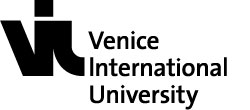S1806 Intercultural Communication
Professors
Schedule
Course description
In terms of communication, most institutional and ordinary contexts involve intercultural, multilingual and multimodal features. At first, the course will present the key concepts in the domain of intercultural communication. Then it will focus on a series of research questions linked with globalization: What is intercultural communication in a globalized world? Are there universals in terms of intercultural communication? What role play genres of communication? What is at stake with face to face interaction? How do we best deal with mediated interaction? What is strategic maneuvering and embodiment in intercultural communication? Accordingly, the course will cover the following topics:
- The role of context: what are the situations, genres, normative practices?
- The role of identity: who is doing what in terms of communication?
- The role of face threatening: what is politeness and impoliteness?
- The role of dynamic body language: what is the role of gesture, gaze, voice?
- The role of static features: what means the look and posture?
- The role of affects in communication: what is empathy, charisma, aggressiveness, alignment in public and private contexts?
Learning outcomes
In this course, the students will acquire and improve knowledge and awareness of the role of language in intercultural communication. They will be able to identify differences as well as universals in various multicultural and multilingual contexts. Therefore, the students will increase intercultural competences and skills in terms of communication. In particular, the students will:
- Learn to read and discuss texts on intercultural communication and what is at stake with it.
- Learn to transcribe multimodal intercultural data and analyze it.
- Learn to circumscribe communicative strategies and negotiation skills in multicultural contexts.
Teaching method
The sessions will be structured around the discussion of seminal essays anchored into subtopics. Students will have to read each essay in preparation of the respective session. The discussion will include the students’ own experiences and intuitions concerning intercultural and multilingual contexts.
We will also focus together on “what is happening here and now” in terms of negotiation in the class room interaction as a means of going reflexive in intercultural communication.
I will foster active participation via comparison and debate given the multicultural composition of the audience.
Evaluation
The students’ grade will be composed by:
- Class participation (20%): presence and engagement in group discussions (individual).
- Class exercises (20%) on the basis of transcribed or to be transcribed data (small groups of 2-3 students).
- Report (30 %): 1 or 2 readings per session and 1 oral presentation / or summary of the arguments of 1 session (small groups of 2 -3 students)
- Final essay (30%) on a subtopic addressed during the seminar (small group of 2-3 students)
A mid-term grade will be communicated to the VIU office based on class participation and exercises.
Readings
Angouri, J. (2014). Multilingualism in the workplace: Languages practices in multilingual contexts. Multilingua 33 (1-2): 1-9.
Arnaut K., J Blommaert, B. Rampton and M. Spotti (2012). Language and Superdiversites II. Diversities vol. 14 n°2: 1-120.
Blommaert j. (2016). “Meeting of Styles” and the online infrastructures of graffiti. Applied linguistic Review 7 (2): 99-115.
Bratt Paulston C., S.F. Kiesling & E.S. Rangel (2014). Handbook of Intercultural Discourse and Communication. London. Wiley Blackwell.
Danesi M. & A. Rocci (2009). Global linguistics. An introduction. Mouton. De Gruyter.
Gajo L. et al. (2013). Plurilingualisms and knowledge construction in higher education. In Berthoud A.-C., F. Grin & G. Lüdi (eds.). Exploring the Dynamics of Multilingualism: The Dylan Project (pp. 279-298). Amsterdam. John Benjamins.
Blommaert J., B. Rampton & M. Spotti (2011). Language and Superdiversities. Diversities vol. 13 n°2: 1-82.
Blyth C. & A. Dalola (2016). Translingualism as an Open Educational Language Practice: Raising Critical Language Awareness on Facebook. Alsic vol 19.
Blyth C. (2015). Exploring the complex nature of language and culture through intercultural dialogue. The case of Cultura. In Koike D.A & C. Blyth (eds). Dialogue in Multilingual and Multimodal Communities (pp. 139-165). London. John Benjamins.
Camerer R. & J. Mader (2016). A-Z of Intercultural Communication. Academic study Kit.
Flubacher M-C. (2013). Language(s) as the key to integration? The ideological role of diglossia in the German-speaking region of Switzerland: In Barát E., P. Studer & J. Nekvapil (eds). Ideological Conceptualizations of Language Discourses of Linguistic Diversity (171-192). Berne. Lang.
Flubacher M.-C., R. Coray & A. Duchêne (2016). Language, integration, and investment: The regulation of diversity in the context of unemployment. Multilingua : 1-21.
Griffin B. (2017). Intercultural communication. Strategies, Challenges and Research. New-York. Nova Sciences Publishers.
Jaworski A. & N. Coupland (2006). The Discourse reader. London. Routledge.
Koike D.A. & C. Blyth (2016). A metadialogic approach to intercultural dialogue. Uncovering hidden motivations. Language and Dialogue 6 (2): 223-253.
Luginbühl Martin (2015). Genre profiles as intermediate analytical level for cultural genre analysis. In Artemeva N. & A. Freedman (eds). Trends and Traditions in Genre Studies. Inkshed. Winnipeg: 225-250.
Paulston B., S. Kiesling & E. Rangel (2012). Handbook of intercultural discourse & communication. Oxford. Wiley & sons.
Piller I. (2011). Intercultural communication. A critical Introduction. Edinburgh University Press.
Thurlow C. & A. Jaworski (2011). Banal globalization? Embodied actions and mediated practices in tourists’ online photo sharing. In Thurlow C. & K. Mroczek (Eds.). Digital Discourse: Language in New Media (pp. 220-250). Oxford: Oxford University Press.
Vassiliki M. et al (2013). Multilingual practices in professional settings: Keeping the delicate balance between progressivity and intersubjectivity. In Berthoud A.-C., F. Grin & G. Lüdi (eds.). Exploring the Dynamics of Multilingualism: The Dylan Project (pp. 3-32). Amsterdam. John Benjamins.
Yanaprasart P. (2016). Managing Language Diversity in the Workplace: Between ‘One Language Fits All’ and ‘Multilingual Model in Action’. Universal Journal of Management Vol. 4(3): 91-107.




















